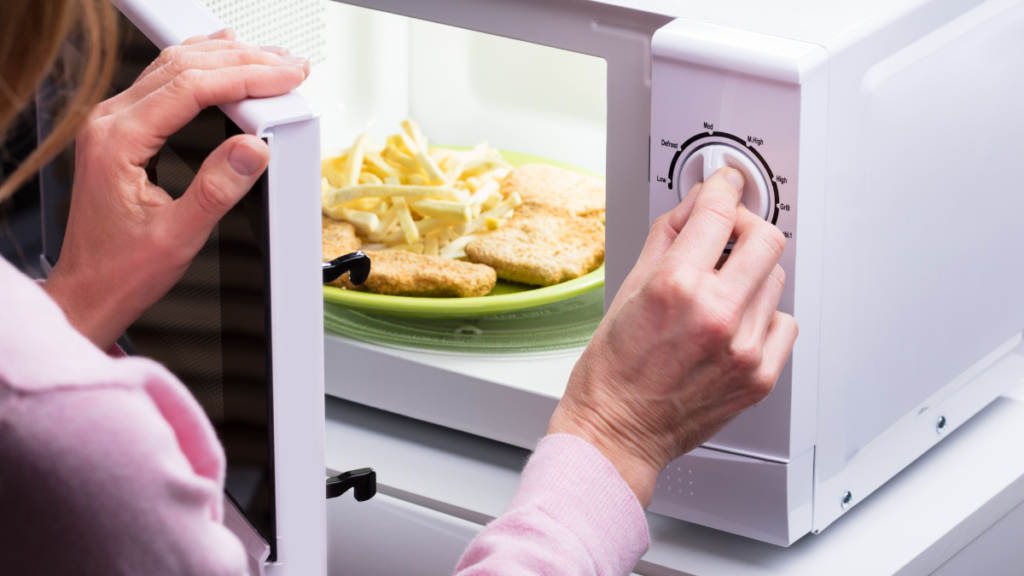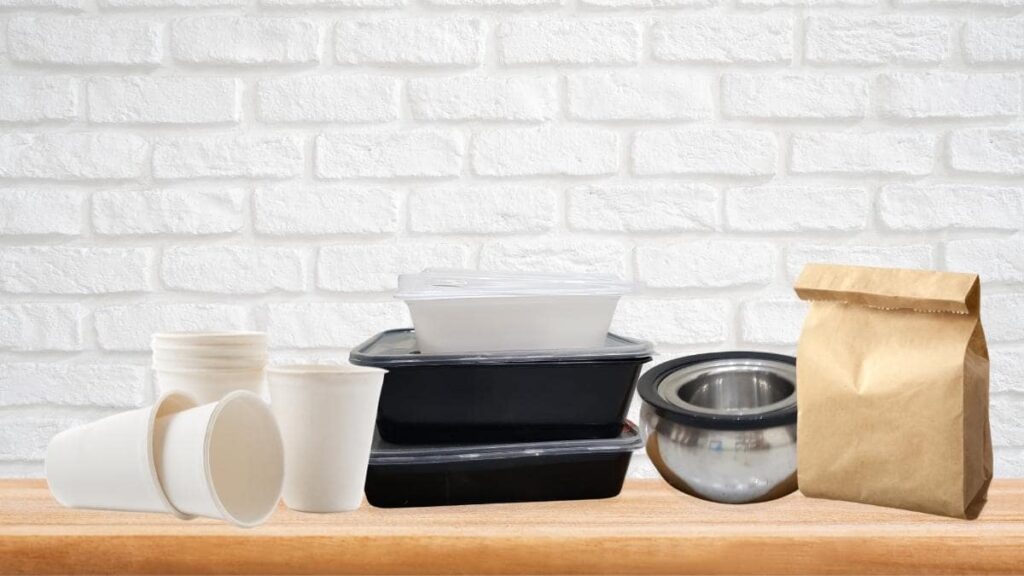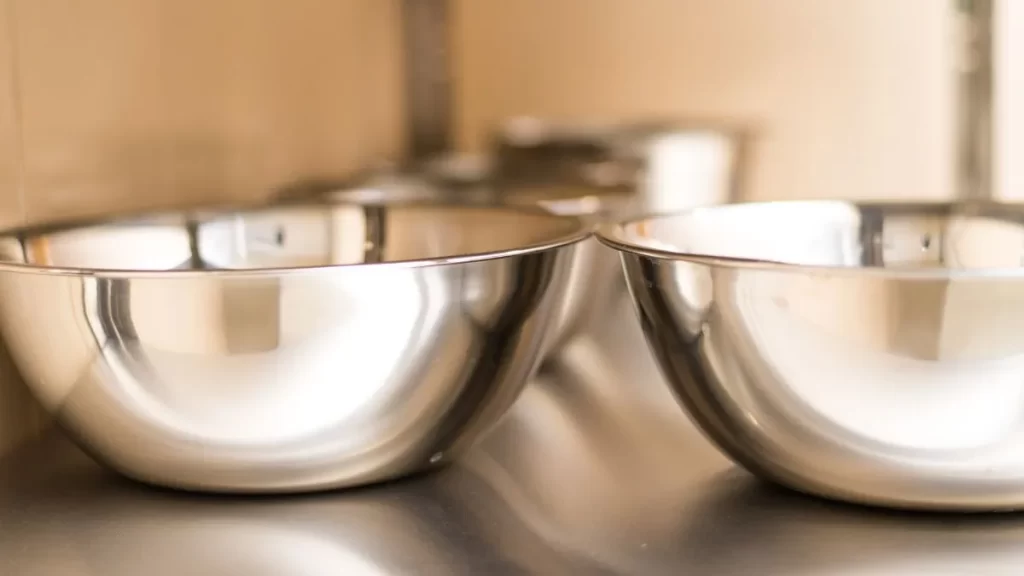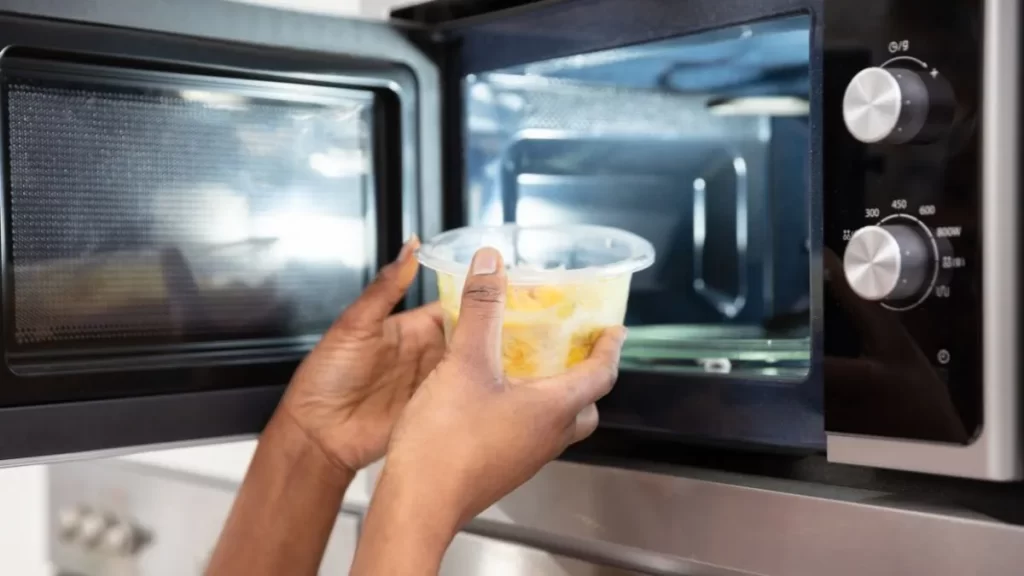If you’re anything like me, your microwave is more than just an appliance—it’s a lifeline to quick meals, reheated leftovers, and yes, even those 3 a.m. mug brownies (don’t judge!).
But let’s face it, microwaves can also be a bit of a mystery.
One question that perplexs many of us is whether it’s safe to use aluminum foil in the microwave.
You’ve probably heard all sorts of opinions on this: from “it’s an absolute no-no” to “eh, it’s probably fine if you’re careful.”
But what’s the real deal? Is it safe or not?
In this article, we’ll dive into all your questions related to microwaving aluminum foil – the science of microwaving, the potential dangers, alternatives to aluminum foil, and so on.
After reading this article, you’ll have all the knowledge you need to microwave wisely and safely.
Let’s break this down.
How does a microwave oven work?
A microwave oven uses electromagnetic waves emitted by a device inside the oven called a magnetron.
The microwaves bounce around inside the microwave cavity and penetrate the food.
Water, fats, and sugars in the food absorb these waves, causing their molecules to vibrate rapidly. This vibration generates heat, which cooks or reheats the food.
Metals like aluminum foil, however, have a love-hate relationship with microwaves.
When microwaves hit a metallic object, they get reflected rather than absorbed.
Think of it like a mirror bouncing back light.
The reflected microwaves can then bounce back onto the magnetron, the very thing that generates microwaves and can damage it.
But the story does not end here.
You already know that metals are good conductors of electricity.
Now, when microwaves interact with a metallic surface like aluminum foil, they induce electric currents in the metal.
This can lead to a phenomenon called ‘arcing,’ where sparks can leap off the metal surface, resembling mini lightning bolts.
These sparks can not only damage the microwave but also create a fire hazard.
So, the science makes it clear – Metals and microwaves can be a risky mix.
But don’t throw out your aluminum foil just yet. There are some situations where you might be able to use it safely, which we’ll get into next.
Can I put aluminum foil in the microwave?
According to the Food Safety and Inspection Service (FSIS) of the U.S. Department of Agriculture, using aluminum foil in a microwave can be risky.
The primary reasons are the risks of fire, arcing, and potential damage to your microwave.
These risks arise because aluminum foil reflects microwaves and can also generate sparks due to the electric currents we talked about earlier.
However, there are certain situations where using aluminum foil might be acceptable.
Some microwave manufacturers provide specific guidelines about how to safely use aluminum foil in the microwave.
The general rule is to use it sparingly and ensure that the foil is smooth without any pointy edges or wrinkles (which could lead to arcing) and does not touch the sides of the microwave.
The ideal distance between the placement of aluminum foil and the microwave oven walls should be 1 inch.
In short, using aluminum foil in a microwave is generally not recommended unless you are following manufacturer-specific instructions for doing so.
The risks outweigh the benefits in most cases, and you would not want to deal with a kitchen fire or a busted microwave.
What are the risks of using aluminum foil in the microwave?
Using aluminum foil in the microwave can lead to risks like arcing, where sparks shoot off the metal, possibly causing a fire.
The foil can also reflect microwaves to the magnetron, which generates the microwaves, potentially damaging your appliance. So, it’s generally best to steer clear!
What to do if I accidentally put foil in the microwave?
So you accidentally threw some aluminum foil into the microwave and hit the “Start” button. Don’t fret; we’ve all been there. Immediate action is essential, and here’s what you need to do:
- Hit the “Stop” or “Cancel” button on your microwave immediately to halt the microwaving process and to minimize the risk of damage or fire.
- Unplug your microwave. This adds an extra layer of security by cutting off the electricity supply.
- Don’t open the microwave door yet. Look for sparks or flames from the foil.
- Give it a few minutes to let any potential sparks or flames die, even if you don’t see it.
- After waiting for a few minutes, carefully open the microwave door and remove the piece of aluminum foil. Look for any signs of damage, like burned spots or arcs, on the foil and inside the microwave.
- Before using the microwave again, it’s essential to determine whether any damage has occurred. Refer to your user manual for guidance on how to perform a safety check, or consider getting a professional evaluation.
Accidents happen! Use this experience as a learning moment. Next time, you’ll know to double-check for any stray bits of foil before hitting that “Start” button.
Tips For Using Aluminum Foil Safely In The Microwave


Let’s say you’re in a situation where you feel you absolutely must use aluminum foil, maybe you’re following a recipe that insists on it, or perhaps your microwave’s manufacturer gave you the green light.
In such a case, there are some precautions you can take to minimize risks.
Read Your Microwave’s User Manual
Seriously, this should be your starting point.
Some microwaves do allow for the use of aluminum foil but always within specific guidelines.
If the manual gives you the thumbs-up, you’re off to a safer start.
Keep It Smooth and Flat
Crinkled foil can lead to arcing. Smooth, flat pieces are less likely to spark and will reflect microwaves more evenly. So, avoid scrunching it up.
Limit Coverage
Never cover or wrap your food fully with the foil, use it sparingly. The less metal in the microwave, the less likely you are to encounter problems.
Keep Distance
Ensure that the aluminum foil is at least one inch away from the walls and door of the microwave. This will help reduce the chance of arcing.
Short Bursts Only
If you’ve passed all the other checks, try using the microwave in short intervals, like 20-30 seconds. Keep a close eye to ensure no sparking occurs.
Avoid High Power Settings
Use a lower power setting to reduce the intensity of microwaves, thereby decreasing the chance of sparking or damage.
Remember, these are tips for minimizing risk, not eliminating it.
Whenever possible, opt for microwave-safe covers, wax paper, or parchment paper as alternatives.
Safety should always be your number one priority when cooking or reheating food.
How long can I keep aluminum foil in the microwave?
Generally, it’s not recommended to put aluminum foil in the microwave.
Even a few seconds can be risky.
Aluminum foil can cause arcing and pose a fire hazard.
It can also damage the microwave’s magnetron, the component that generates microwaves. So, it’s best to avoid the risk altogether.
However, if you need to heat something using aluminum foil, it’s best to reheat it in 20-30 seconds intervals and keep a close watch while doing so.
Can I put aluminum takeout containers in the microwave?


Yes, you can microwave food in aluminum takeout containers but make sure it is of superior grade and labeled microwave-safe.
Putting poor-grade takeout aluminum containers is better avoided for microwave cooking as that can cause chemical leeching into the food.
Always confirm the durability and quality of the aluminum takeout container before putting it in the microwave, as poor-quality foils are likely to catch fire easily.
Also, be alert to take out the container shortly rather than put it inside the microwave longer.
Don’t leave your microwave unattended when heating food in an aluminum takeout container.
Can I use aluminum foil in a microwave convection oven?
Let’s talk about microwave convection ovens, the multi-talented appliances that can both microwave your soup and convection-bake your cookies.
The question is, where does aluminum foil fit into this versatile cooking equation?
The Hybrid Nature of Microwave Convection Ovens
Firstly, let’s break down what a microwave convection oven is.
It’s a hybrid that combines the quick-cooking feature microwave offers with the baking and roasting capabilities offered by a convection oven.
Now, because of this dual functionality, the answer to whether you can use aluminum foil isn’t a simple yes or no.
When Using Convection Mode
In convection mode, aluminum foil can indeed be used, much like it is in a traditional oven to catch drips or hold food.
Here, you’re not using microwaves to cook, but hot air circulated by a fan.
So, aluminum foil should not pose any problem in this setting.
However, make sure never to let the foil touch the oven’s walls, as it can still get hot enough to pose a fire risk.
When Using Microwave Mode
In pure microwave mode, steer clear of aluminum foil for all the reasons we’ve mentioned above – the risk of arcing, fire, and appliance damage.
The rules haven’t changed just because your microwave has some extra features.
When Using Combo Mode
Some microwave convection ovens have a combination setting that uses both microwaves and convection heat.
In this setting, avoid using aluminum foil.
The microwave portion of the cooking process will still interact poorly with the foil, creating the same safety concerns.
Before attempting to use aluminum foil in any capacity, consult your user manual for guidance.
Manufacturers often have specific guidelines for what can and can’t be used in their appliances.
And as always, when in doubt, stick to microwave-safe cookware.
Is there any alternative to aluminum foil in the microwave?
Glad you asked. There are plenty of alternatives to heat your food without causing a light show in your microwave.
Wax Paper or Parchment Paper
Wax paper or parchment paper can be a lifesaver when it comes to microwave cooking. These papers are microwave-safe and can be used to cover dishes to prevent splatters. Parchment paper can also be used to wrap items for steam-cooking inside the microwave.
Microwave-safe Plastic Wrap
Look for plastic wraps that explicitly state they’re microwave-safe to avoid melting issues or the release of harmful substances. However, make sure the plastic doesn’t touch the food during microwaving.
Microwave-safe Lids or Plates
Good old-fashioned microwave-safe glass or ceramic plates can be used to cover bowls, and specialized microwave-safe lids offer an excellent reusable option. Just steer clear of regular plastic lids—they can warp or melt.
Silicone Lids
Silicone lids are becoming increasingly popular and are super versatile. They can go from the fridge to the microwave without any issues and come in various shapes and sizes to fit your containers. Just ensure they are labeled as microwave-safe before using.
Microwave Cooking Bags
You can find microwave-safe cooking bags that are designed for single use. These are great for steaming vegetables or fish right in their own juices.
Paper Towels
Paper towels can do the trick for covering foods that might splatter. It’s best used for quick reheats rather than longer cooking times where it might dry out and become a fire hazard.
The Dish’s Own Lid
Some microwave-safe dishes come with their own lids designed for this very purpose. These are often vented to release steam during cooking. Just make sure the lid is designed for microwave use, so you’re not met with an unfortunate surprise.
Conclusion
So, we’ve gone down quite the rabbit hole answering the burning question: “Can I put aluminum foil in the microwave?”
By now, you should have a well-rounded understanding of why it’s generally a bad idea, the science behind it, and the risks involved.
We’ve also explored alternatives to aluminum foil that are not only safer but often more effective for microwave use.
Sure, we all love aluminum foil for its versatility in the kitchen – from wrapping sandwiches to covering dishes in the oven. But when it comes to the microwave, it’s a definite mismatch.
Sparks can fly (literally!), you risk damaging your appliance, and let’s not forget the fire hazard it poses.
Instead, we have a whole host of safer, microwave-friendly alternatives to choose from, like parchment paper, microwave-safe lids, and silicone covers.
We all want to take shortcuts in the kitchen sometimes, but risking your safety and the health of your appliances isn’t the way to do it.
When in doubt, consult your microwave’s user manual for specific guidance.
So the next time you find yourself pondering, “Can I put aluminum foil in the microwave?” remember: it’s far better to play it safe. Your microwave will thank you.







